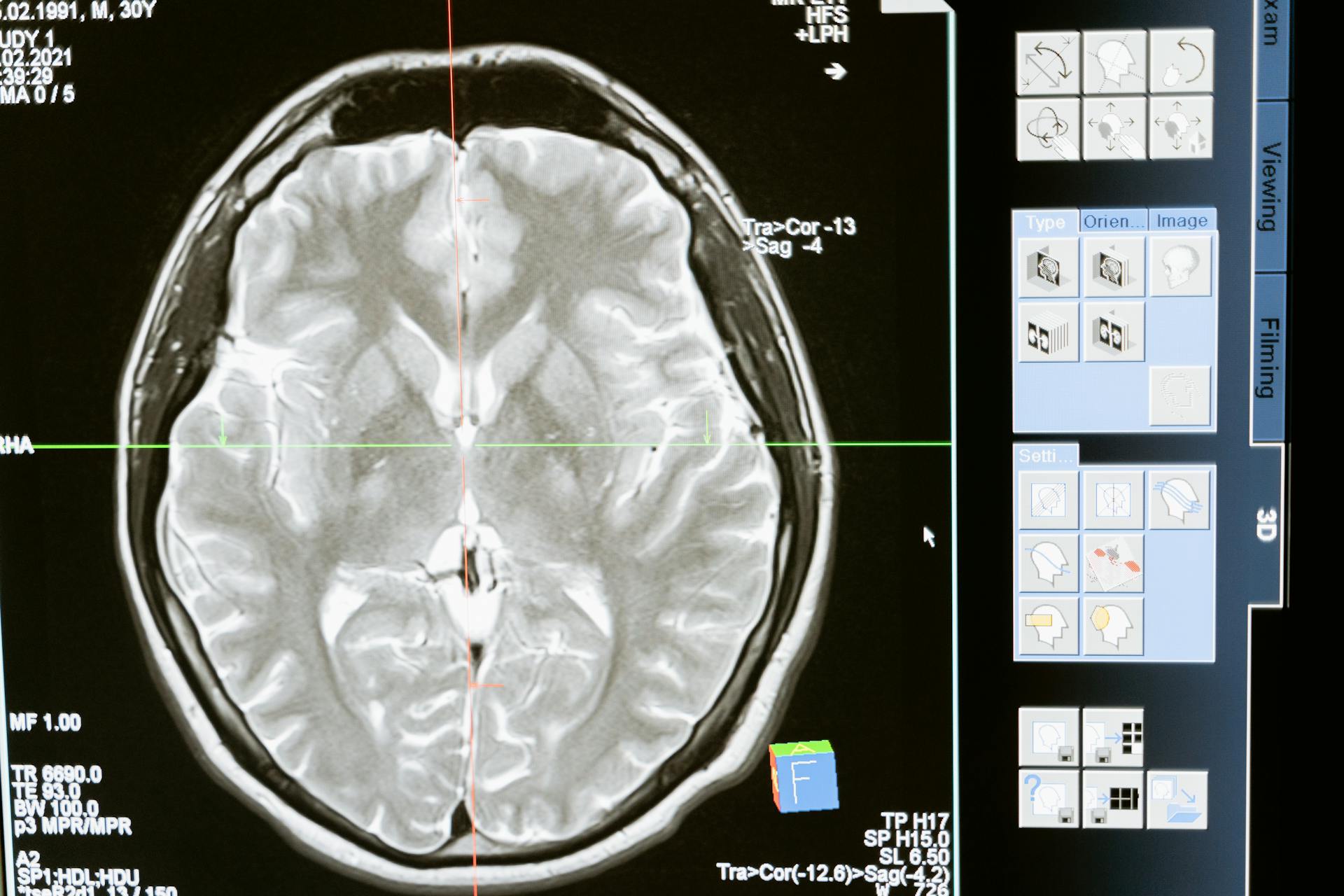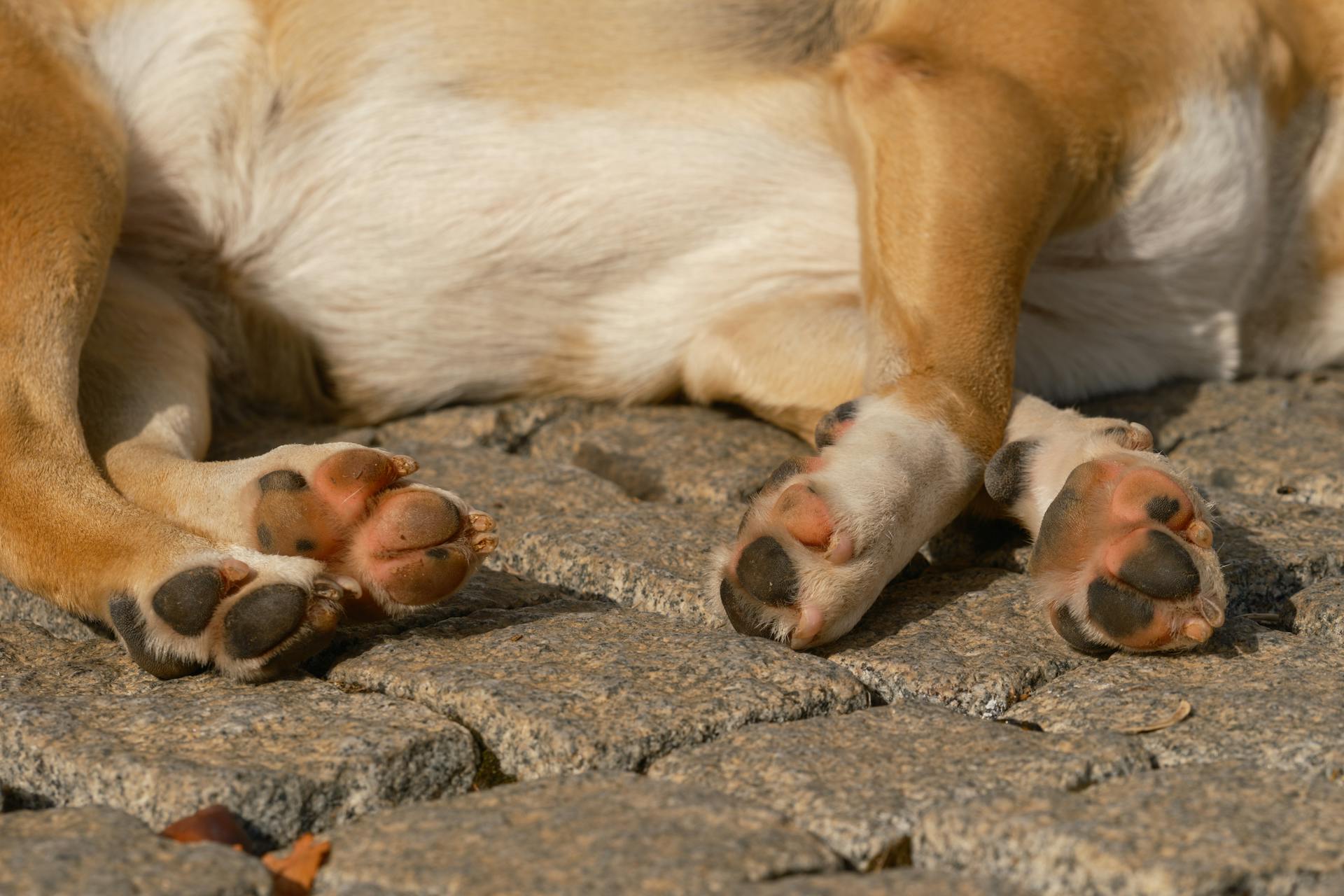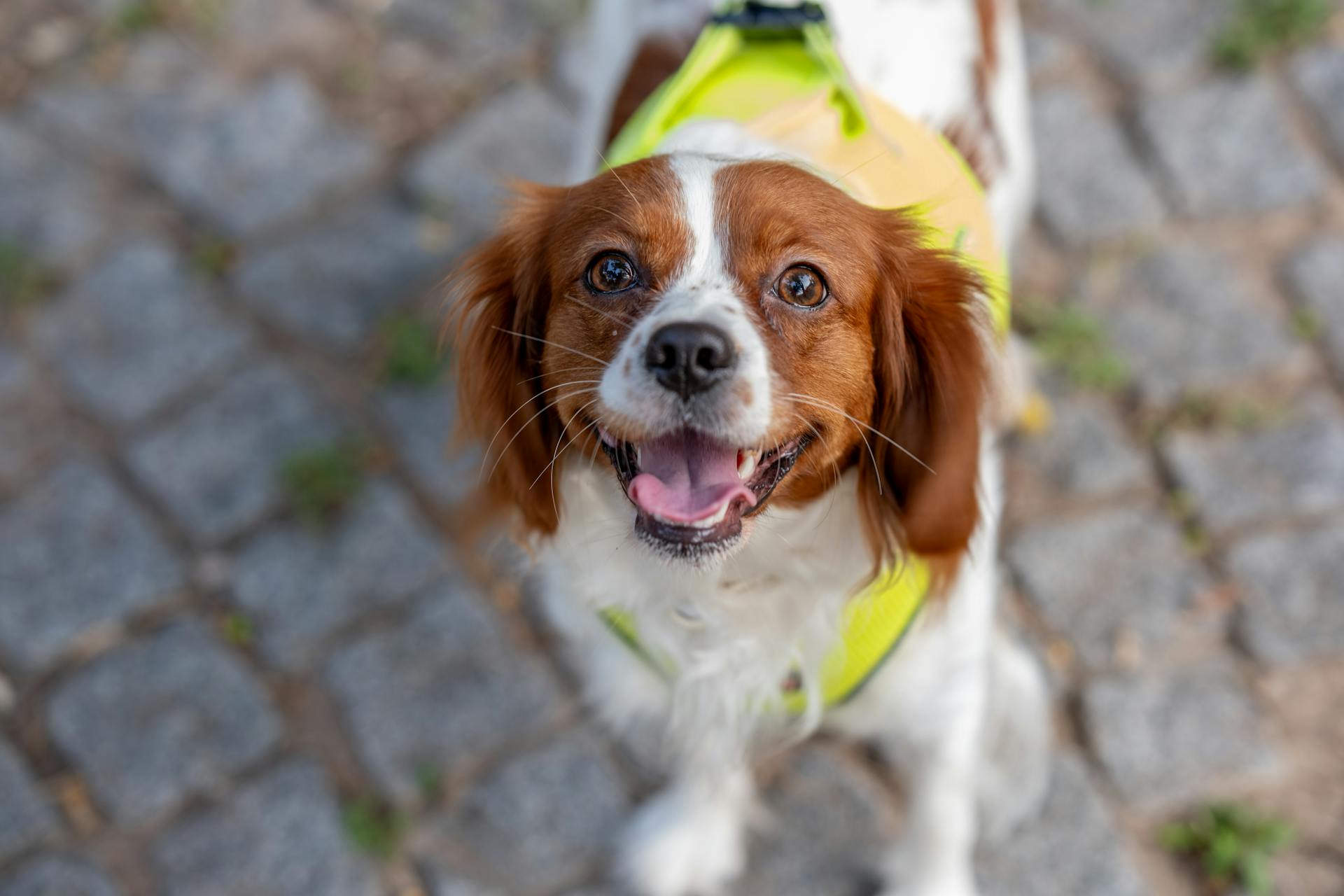
Understanding canine femur anatomy is crucial for any dog owner or enthusiast. The femur, also known as the thighbone, is the longest and strongest bone in a dog's body.
The femur is a weight-bearing bone that connects the hip joint to the knee joint, playing a vital role in supporting a dog's body weight and facilitating movement.
In dogs, the femur is typically around 20-25% of the total body length, which is a significant proportion of their overall anatomy.
A dog's femur is made up of several key components, including the femoral head, neck, and shaft.
Color-Coded Representation
A color-coded representation can be a valuable tool in understanding canine femur anatomy. This is especially true when it comes to identifying safe, risky, and dangerous areas for implant insertion.
A Colored Bone Map can help clarify these areas, providing a clear definition of where implants can be safely placed. This can be a game-changer for surgeons and veterinarians working with canine femur injuries.
The Colored Bone Map specifically highlights the femur, providing a clear color definition of safe, risky, and dangerous places for implant insertion. This includes screws securing bone plates or external stabilizer screws.
Understanding these color-coded representations can help reduce the risk of complications during surgery. By knowing exactly where to place implants, surgeons can minimize the risk of damage to surrounding tissues.
A Colored Bone Map can be a valuable resource for anyone working with canine femur anatomy. It provides a clear and concise way to identify safe and risky areas for implant insertion.
Femur Anatomy
The femur is a long bone in a dog's upper leg, longer than it is wide. It's divided into three parts: the proximal end, shaft, and distal end.
The proximal end of the femur includes the femoral head, ball part of the hip joint, neck, and greater trochanter. The greater trochanter attaches to tendons that connect to the gluteus minimus and gluteus medius muscles, which help with walking and running.
The femur has a medullary cavity, which contains bone marrow, and areas of compact and solid bone at its ends. Surrounding these areas is spongy bone with lots of small cavities.
Here are the three parts of the femur:
- Proximal end
- Femoral shaft
- Distal femur
Bone Structure
The femur, or thigh bone, is a type of long bone that has a unique structure. It's longer than it is wide.
The femur is divided into three parts: the proximal end, the shaft, and the distal end. These parts work together to form a sturdy bone that supports our body.
The proximal end of the femur includes the femoral head, the ball part of the ball-and-socket hip joint, the neck, and the greater trochanter. The greater trochanter attaches to tendons that connect to the gluteus minimus and the gluteus medius muscles.
The femoral shaft is a cylinder-like piece of the bone that includes the lesser trochanter. This piece helps flex the thigh to lift the leg forward.
The distal femur is where the bones connect with the patella (knee cap) and the bones of the lower leg (the tibia and fibula). It has rounded edges, known as the condyles, on either side of the joint with a depression between them called the patellar groove.
Here's an interesting read: Dogs Back Leg Anatomy
The medullary cavity, which contains bone marrow, is located inside the body of the femur. This cavity is surrounded by spongy bone, which has lots of small cavities dispersed throughout it.
The neck and head of the femur are made up of spongy bone, giving them a lightweight yet strong structure. This is important for supporting our body's weight and allowing for movement.
Femur 31 B1
The femur, or thighbone, is a long bone in the canine's leg. It's a vital part of their skeletal system.
A fracture of the proximal epiphysis of the canine femur can be a serious injury. This is the area where the femur meets the hip joint.
The AOVet classification system categorizes fractures into different types. The 31-B1 fracture is a specific type of fracture that occurs in the proximal, basicervical area of the femur.
In a 31-B1 fracture, there is an oblique fracture of the femoral shaft. This means that the break in the bone is at an angle, rather than a straight line.
A fresh viewpoint: Respiratory System in a Dog
Fracture Types (32A2, 32 A3)

A fracture of the femur, or thighbone, can be a serious injury for canine companions.
The AOVet classification system is used to categorize femur fractures, with different types indicating varying severity and characteristics.
A fracture classified as 32-A2 is a diaphyseal, oblique fracture.
This type of fracture occurs in the middle section of the femur and has an oblique (slanted) pattern.
A fracture classified as 32-A3 is a diaphyseal, simple, transverse fracture.
This type of fracture is a clean break in the middle section of the femur with a straight across pattern.
Both types of fractures can be painful and may require veterinary attention to ensure proper healing and prevent complications.
Consider reading: Dog Tail Types
Plate Contouring Models
Plate contouring models are a crucial tool for surgeons, allowing them to prepare for preoperative procedures with precision.
These models are designed specifically for healthy dog's femur, providing an accurate representation of the bone's structure.
A basic set of models is available, which includes healthy dog's femur prepared on the basis of computed tomography.
These models are made using 3D printing technology with a durable material, ensuring they can withstand repeated use.
Frequently Asked Questions
Can a dog recover from a broken femur without surgery?
Minor fractures may be treatable with a splint or cast, but more severe breaks often require surgery. A broken femur is a serious injury that may not heal without surgical intervention
What are the 5 parts of the femur?
The femur, or thigh bone, has 5 distinct parts: the head, neck, greater trochanter, lesser trochanter, and intertrochanteric line and crest. Understanding these parts is essential for grasping the femur's anatomy and function.
How do you treat a spiral fracture in a dog's femur?
A spiral fracture in a dog's femur is typically treated with a bone plate and screws to stabilize the break, allowing for a quick recovery with minimal aftercare. The metal implants can usually be removed after one year in adult dogs, or sooner in puppies.
Featured Images: pexels.com

